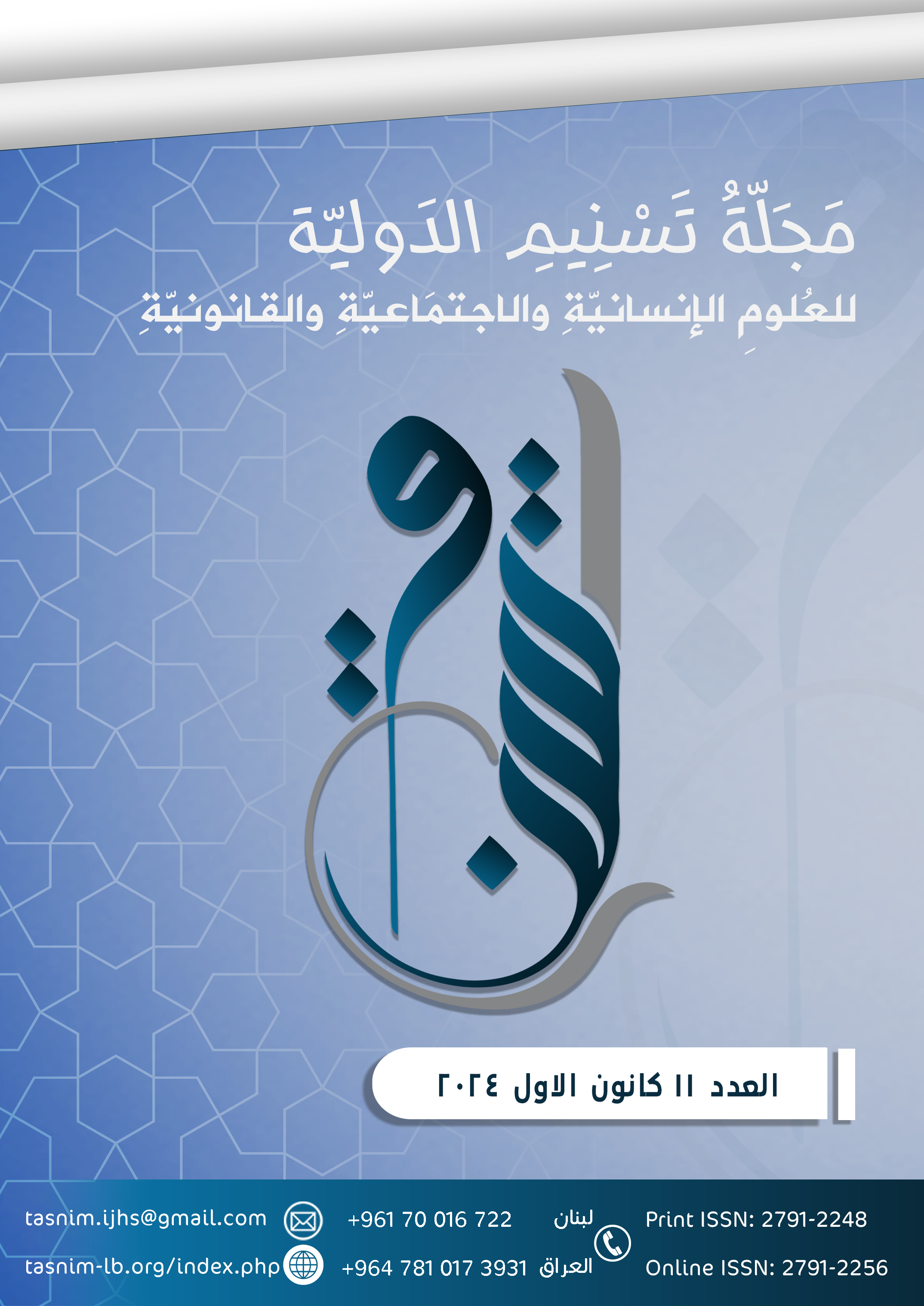بلاغة العتبات النصية في رواية خطوط الطول وخطوط العرض لعبد الرحمن مجيد الربيعي
DOI:
https://doi.org/10.56924/tasnim.11.2024/18Keywords:
Atabat al-Muqaddimah, Atabat al-Khātimah, rhetorical significance of semantic thresholds, simile, metaphor, kenning, metonymy, literary criticism, Abdulrahman Majid Al-Rubaie, novel, imaginative space, black irony, social critiqueAbstract
This study aims to analyze the literary rhetoric used by Abdulrahman Majid Al-Rubaie in his novel Lines of Latitude and Longitude, focusing specifically on the textual thresholds( ʿAtabat al-Muqaddimah and ʿAtabat al-Khātimah), as well as the rhetorical devices of simile, metaphor, kenning, and metonymy in the quoted texts.In the first chapter, the study focuses on ʿAtabat al-Muqaddimah(the introductory threshold) as a tool for understanding the context and literary direction the author adopts. The introduction plays a crucial role in illuminating the text and providing clear explanations for the reader, opening new horizons for understanding the literary experience. The passage describing the conspiracy against the city illustrates how the introduction shapes expectations for the structure of the novel.As for ʿAtabat al-Khātimah(the concluding threshold), it is considered the closure of the imaginative space and a complement to the events by offering a complete image of the conflict and the surprises that might arise in the novel. Unlike the opening, which sets the stage for the text, the conclusion guides the reader’s interpretation towards the final meanings of the text.The second chapter discusses the rhetorical significance of semantic thresholds, with a detailed analysis of three major rhetorical devices used in the quoted texts: simile, metaphor, kenning, and metonymy. In simile and metaphor, Al-Rubaie creates vivid and tangible images that reflect the characters' suffering through both concrete and abstract comparisons that evoke the reader’s emotions. Kenning is analyzed as a rhetorical device used by Al-Rubaie to indirectly express social and political criticism, with meanings suggested through implication rather than direct statement. Metonymy was frequently used to express human emotion and political critique, using wordplay that reflects both suffering and resistance.In conclusion, it can be said that Al-Rubaie uses rhetorical devices with skill to create literary works that are both critical and ironic, enriching the literary work and encouraging the reader to reflect on the social and political realities.
Downloads

Downloads
Published
How to Cite
Issue
Section
License
Copyright (c) 2025 Tasnim International Journal for Human, Social and Legal Sciences

This work is licensed under a Creative Commons Attribution-NonCommercial-NoDerivatives 4.0 International License.





